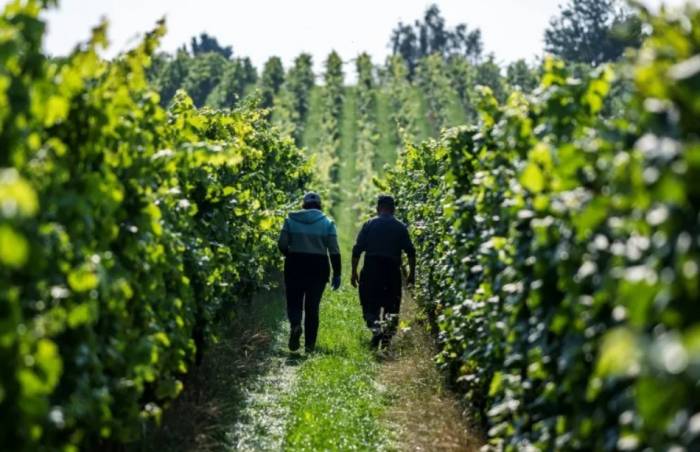Warming Temperatures Revive Northern German Vineyards as Climate Change Alters Wine Industry
Growers face new opportunities and risks as longer seasons boost production but extreme weather and market pressures intensify challenges
2025-09-22

In northern Germany, climate change is reshaping the landscape of viticulture. On a warm September morning, a group of harvesters works quietly among the lush vines on a hillside overlooking the Havel River and the village of Werder, about 22 miles from Berlin. The scene could be mistaken for southern Europe, but it is set at the 52nd parallel north, a latitude more commonly associated with Mongolia or Alaska. Here, Manfred Lindicke manages a 7.6-hectare vineyard that produces wine with protected designation of origin status, making it one of the northernmost quality wine producers in Europe.
Viticulture in this region dates back to the Middle Ages but disappeared in the mid-19th century due to harsh frosts and economic challenges. The tradition was revived after German reunification, driven by passionate pioneers and aided by rising temperatures. According to the German Wine Institute, average temperatures between April and October have increased by more than one degree Celsius since 1990. This warming trend has shifted the start of the grape harvest from early October to early September, as Lindicke recalls from his experience since 1996.
Since 2016, changes in European regulations have allowed vineyards to be planted on more than 200 hectares of land in northern Germany. In Lower Saxony, a region bordering the North Sea, about twenty new vineyards have emerged. Jan Brinkmann, president of the local winegrowers’ association, notes that current temperatures are now suitable for grape cultivation. Brinkmann himself has replaced cereal crops with three grape varieties on his 1.5-hectare farm, seeking crops less vulnerable to climate extremes.
The wines produced here are already gaining recognition for their light and fruity character. Peter Weymann, a volunteer harvester at Lindicke’s vineyard, believes that German winemakers no longer need to hide behind their Italian and Spanish counterparts. However, Lindicke remains cautious. He points out that earlier harvests bring new challenges: sunburn can damage certain grape varieties, drought has forced him to install drip irrigation systems, and extreme weather events such as hail, late frosts, and heavy rains are becoming more frequent.
While German winegrowers have so far benefited overall from climate change—longer growing seasons and warmer temperatures—the increase in extreme weather events is a growing concern. Diseases such as downy mildew after wet springs and summers, esca during hot dry periods, and “black wood” spread by insects from southern Europe are becoming more common. The spotted wing drosophila fly is another new threat.
To adapt, growers are planting new fungus-resistant grape varieties known as “PiWi.” These now cover more than 3% of Germany’s vineyards and over half of Lindicke’s own land. Despite these efforts, economic pressures remain high. Since the Covid-19 pandemic and a drop in demand, German consumers have increasingly turned to cheaper wines from neighboring countries. Lindicke notes that when French sauvignon blanc sells for €2.50 in supermarkets while his own bottles cost €12 or €15, it becomes difficult to compete.
At age 75, Manfred Lindicke continues to search for someone to take over his vineyard as he faces an uncertain future shaped by both climate change and market forces.
Founded in 2007, Vinetur® is a registered trademark of VGSC S.L. with a long history in the wine industry.
VGSC, S.L. with VAT number B70255591 is a spanish company legally registered in the Commercial Register of the city of Santiago de Compostela, with registration number: Bulletin 181, Reference 356049 in Volume 13, Page 107, Section 6, Sheet 45028, Entry 2.
Email: [email protected]
Headquarters and offices located in Vilagarcia de Arousa, Spain.